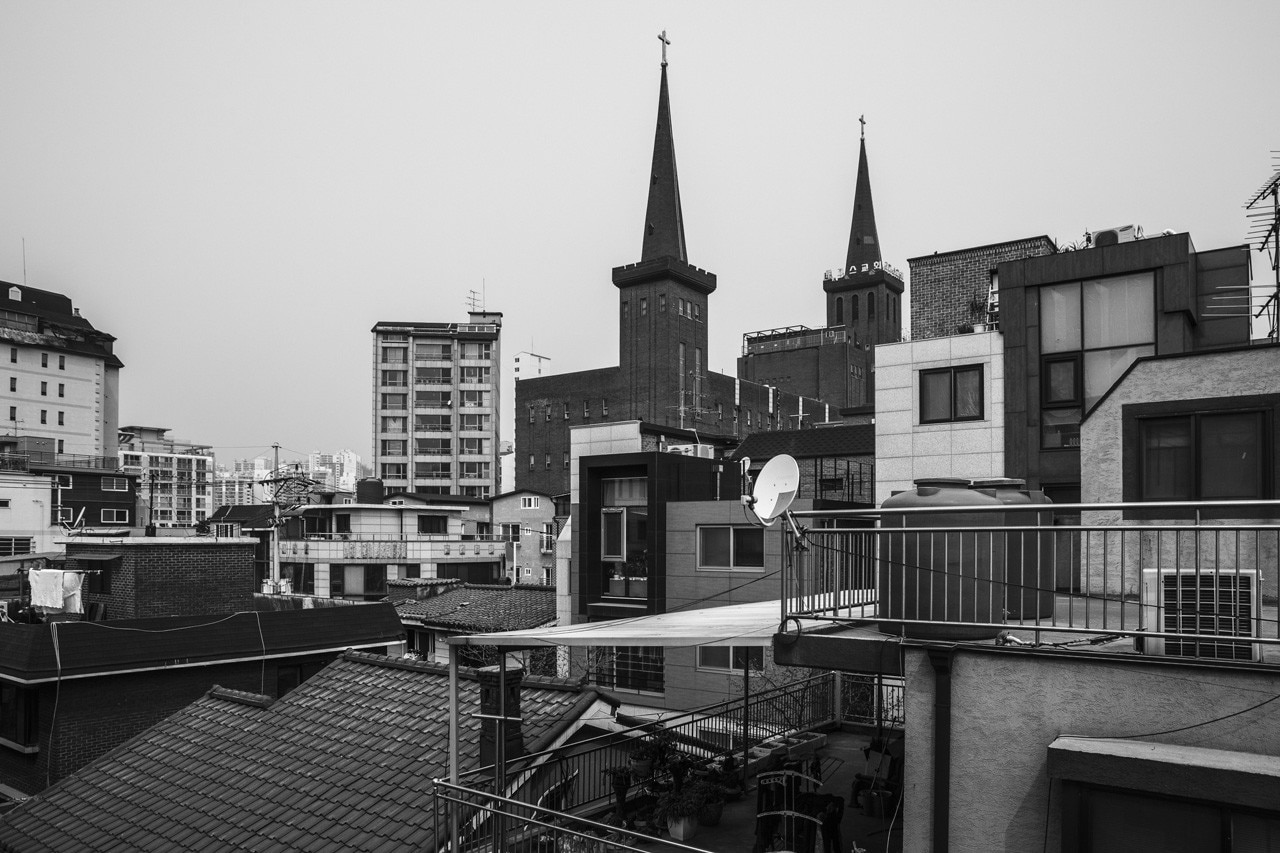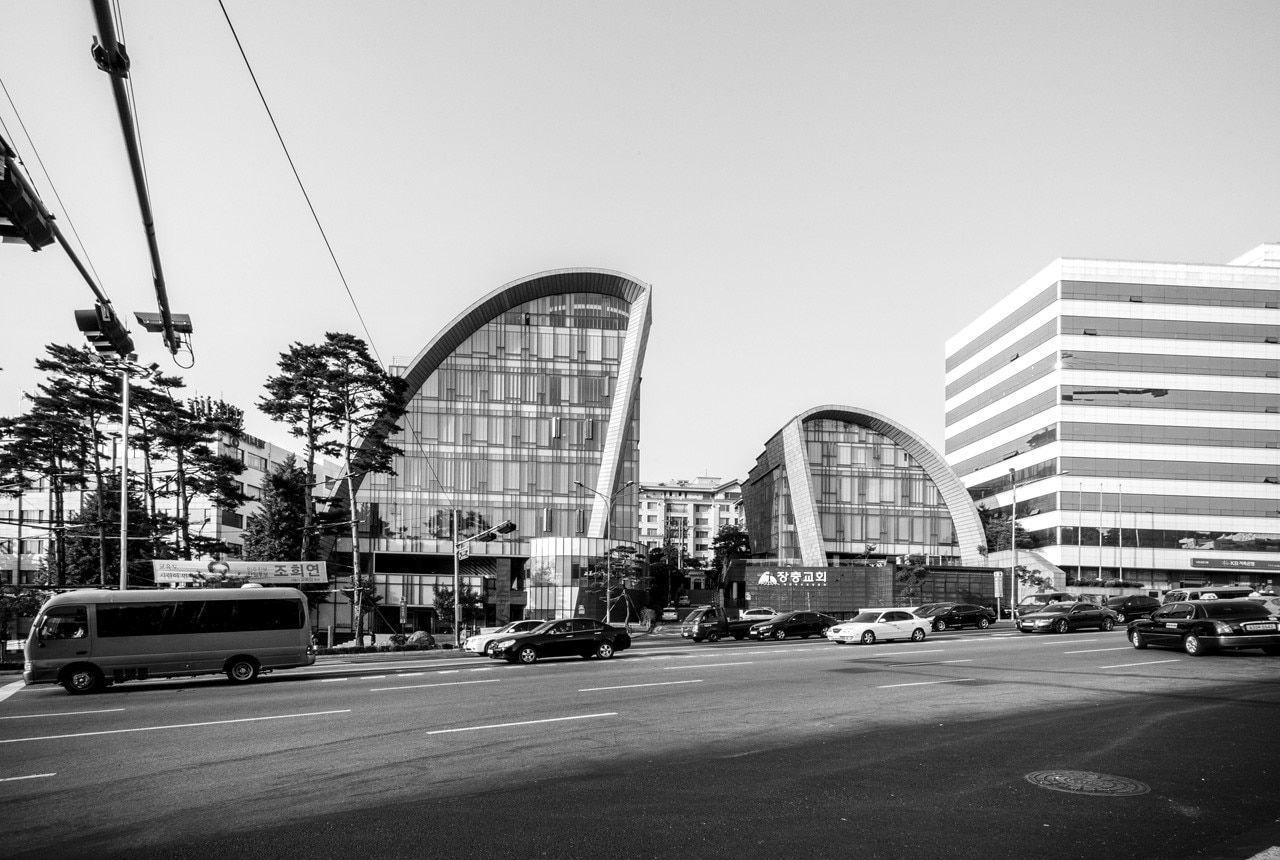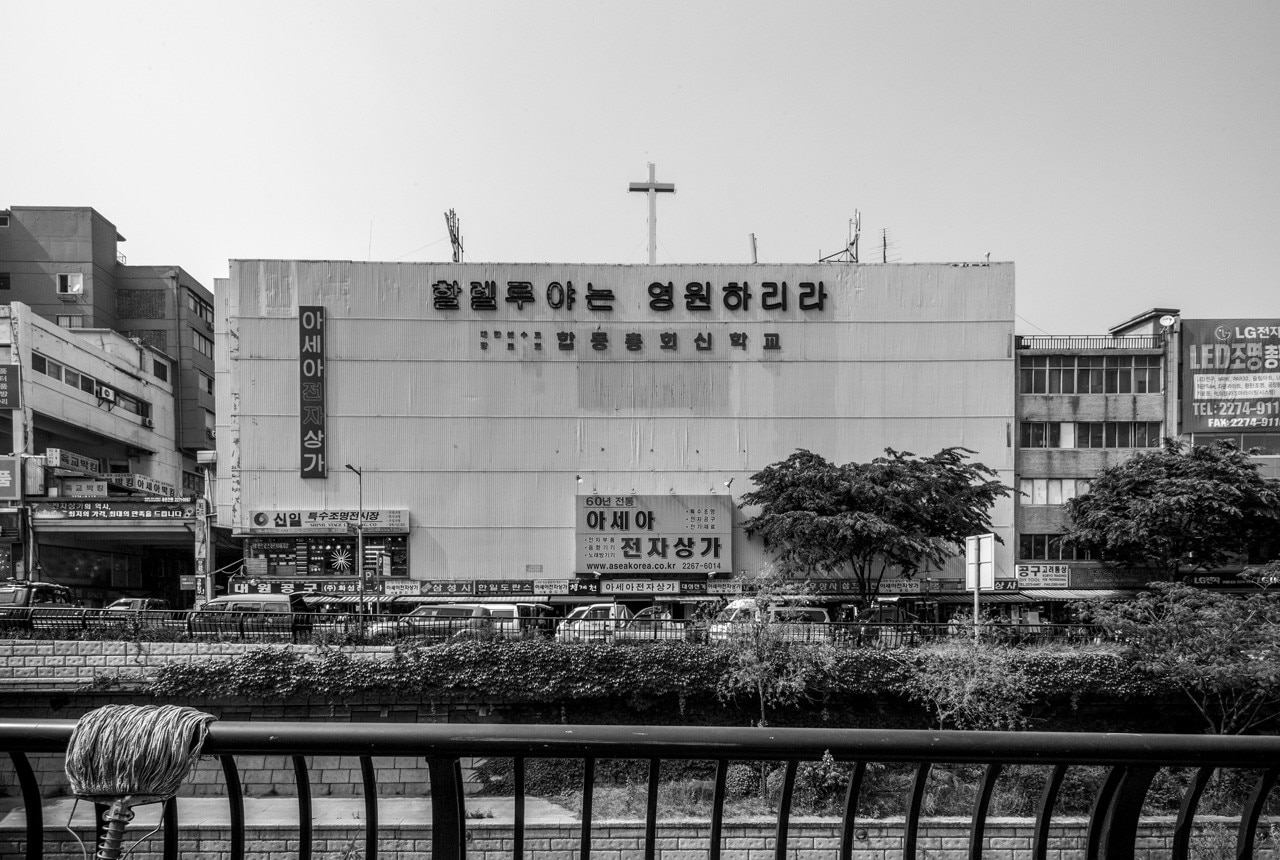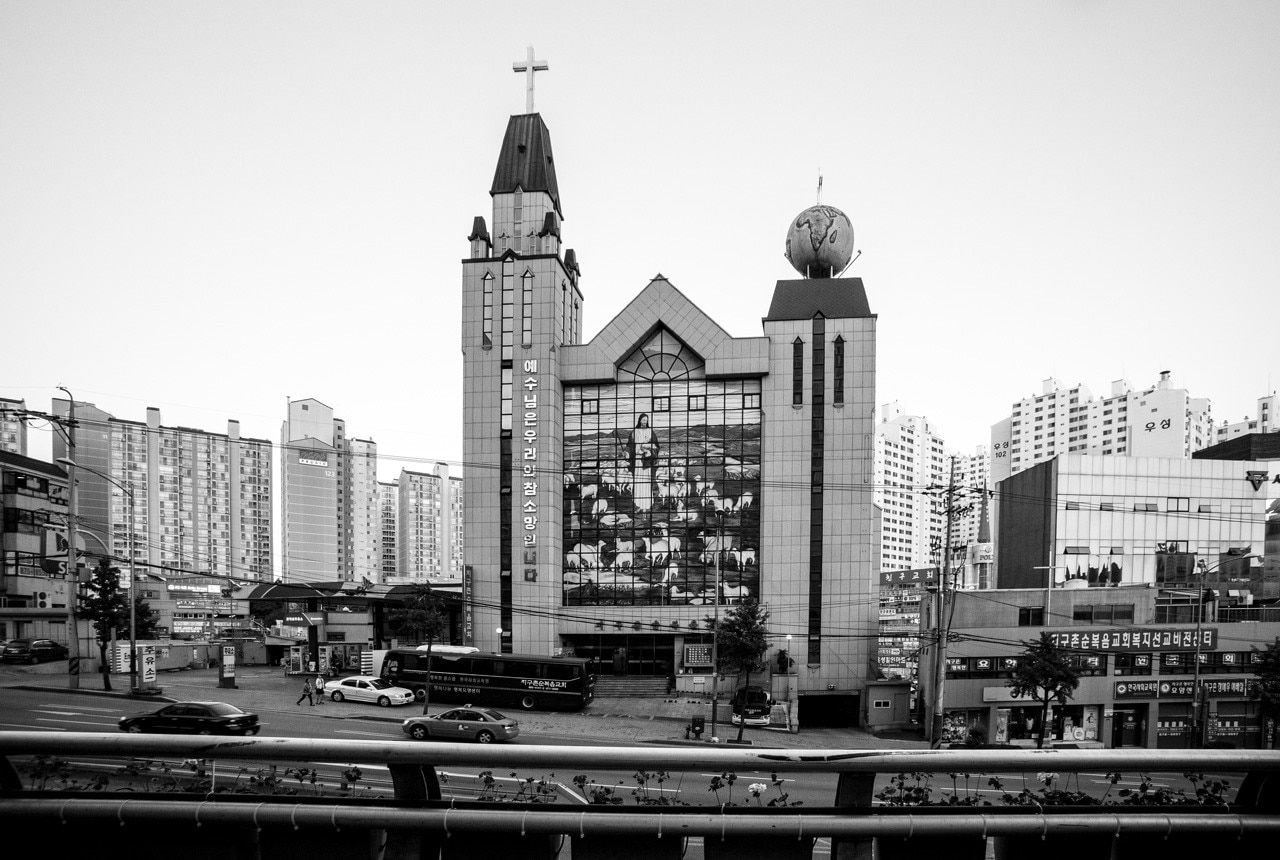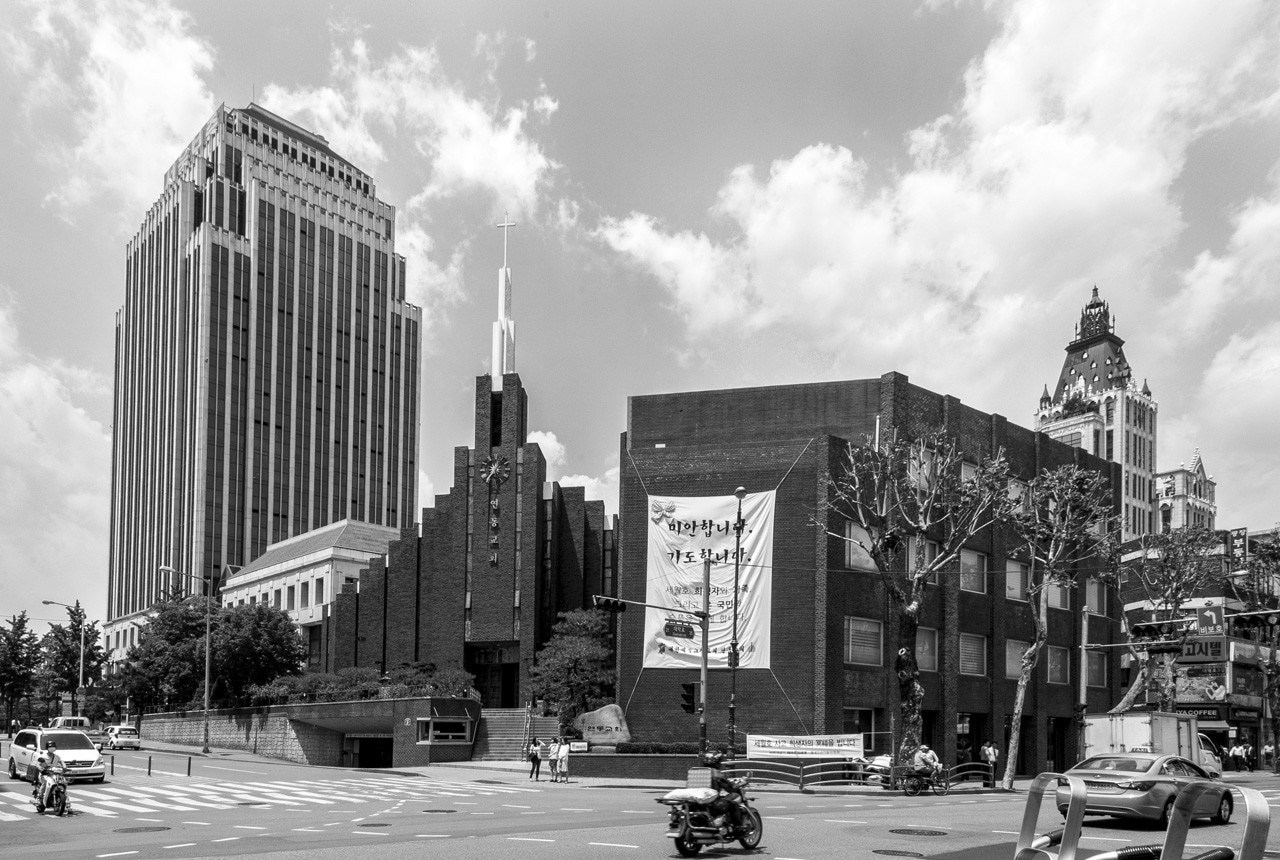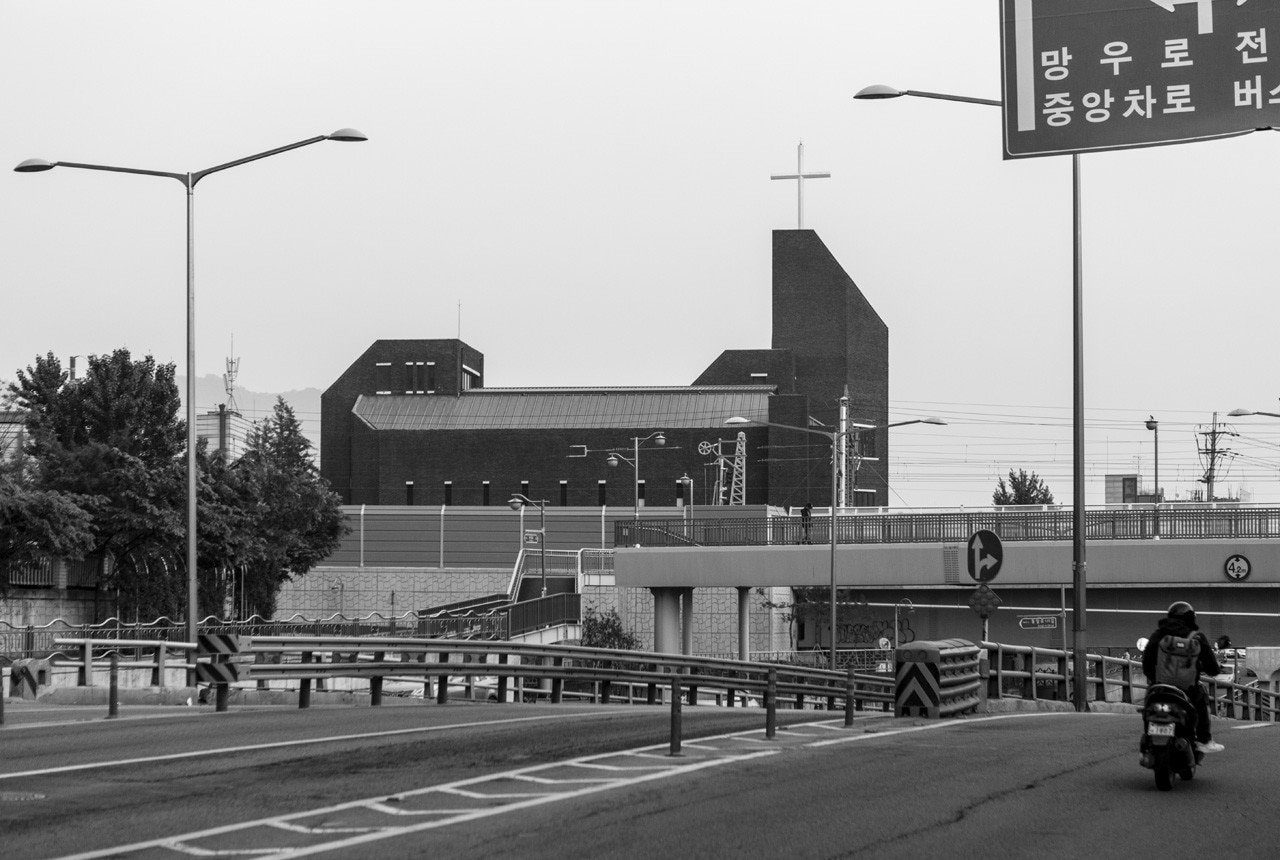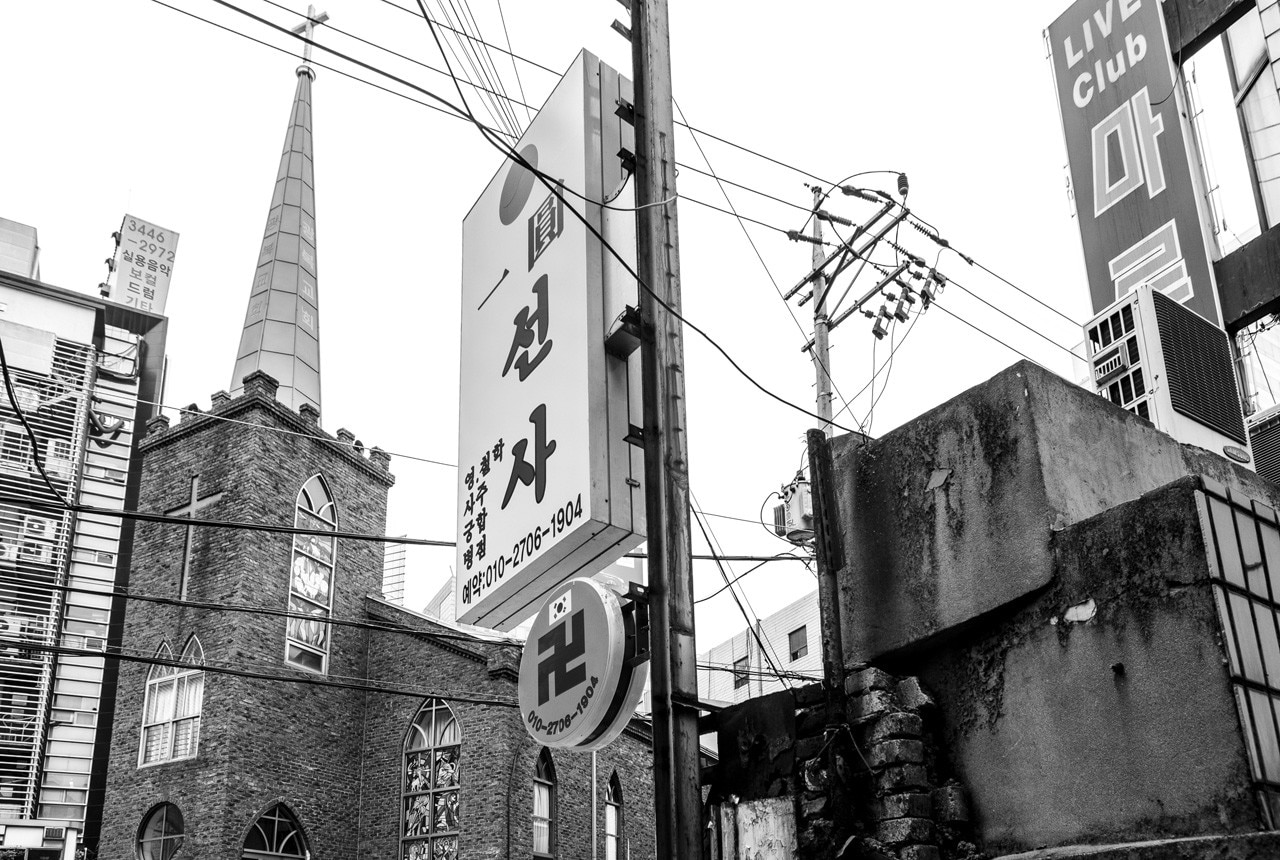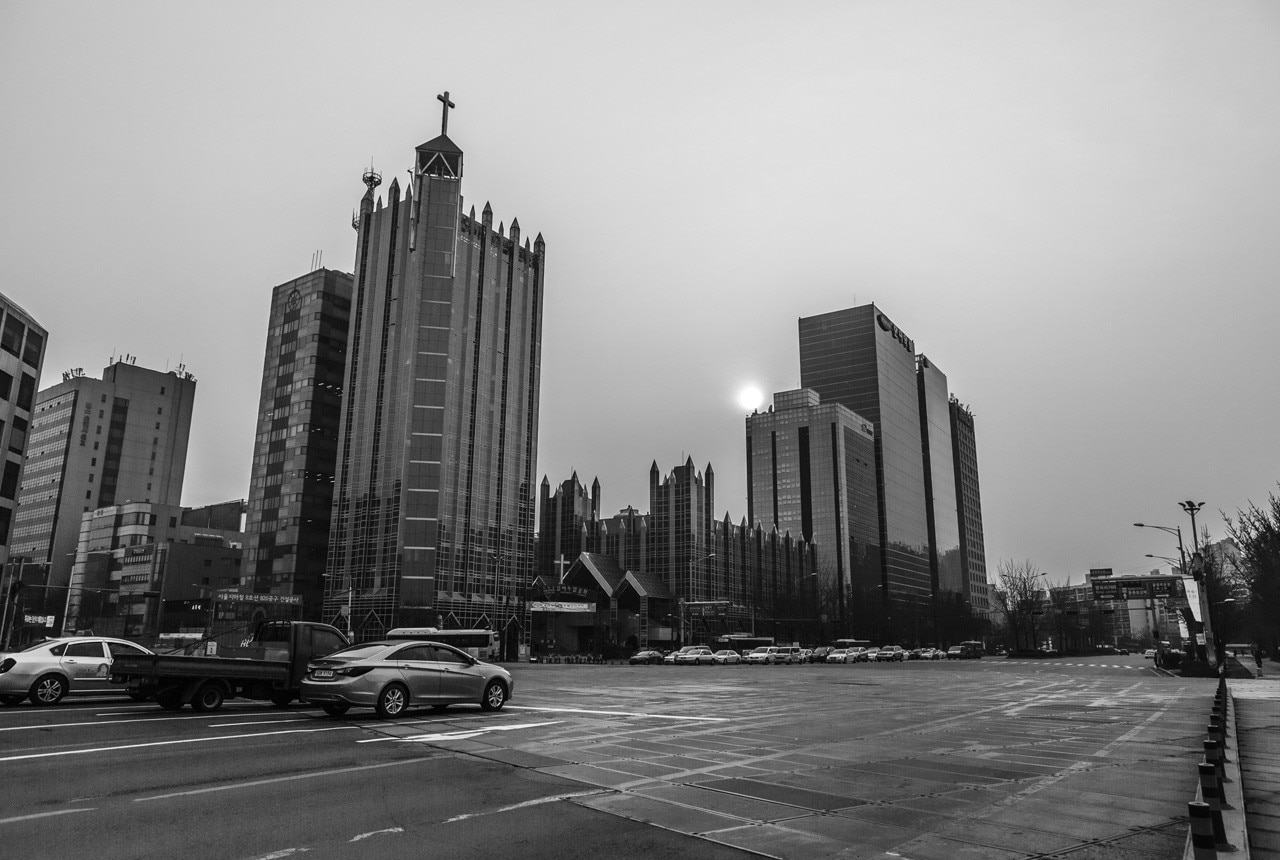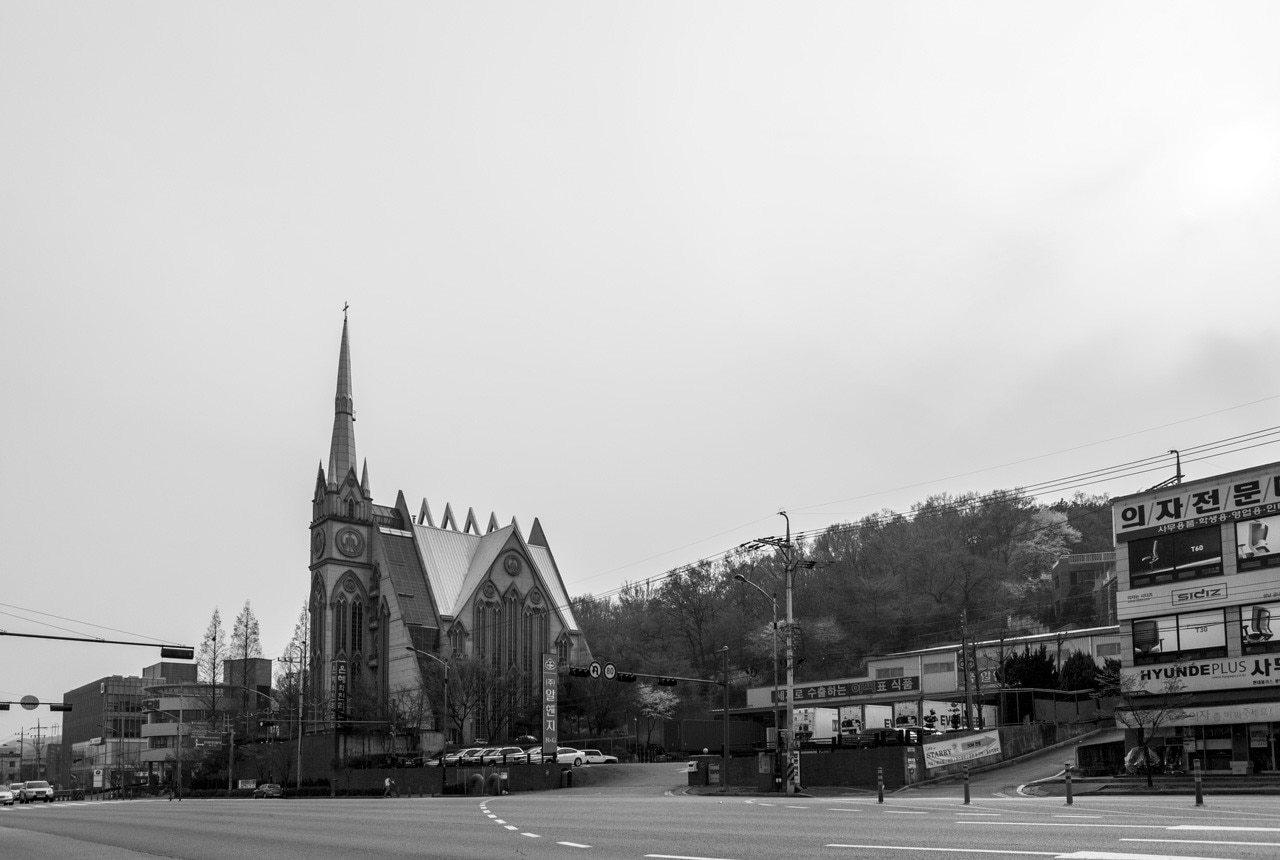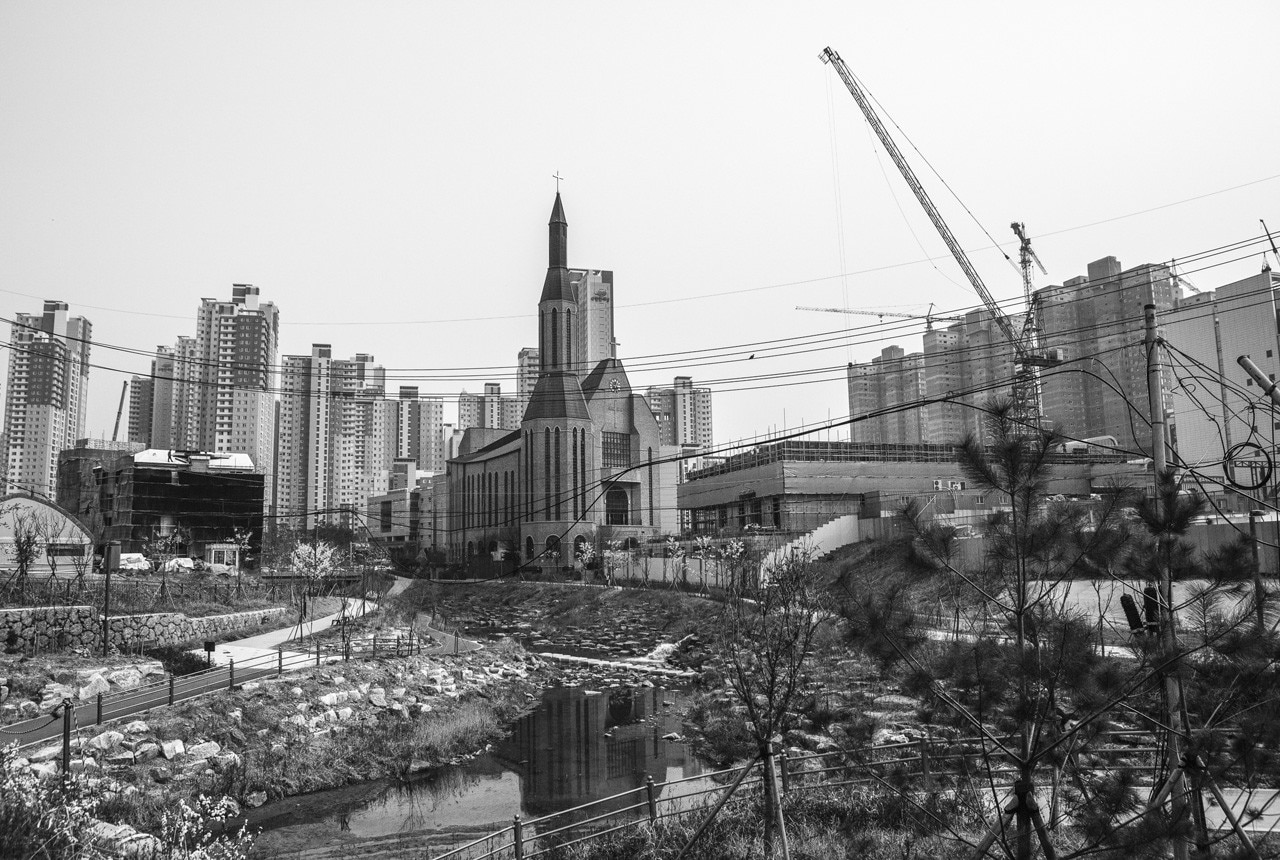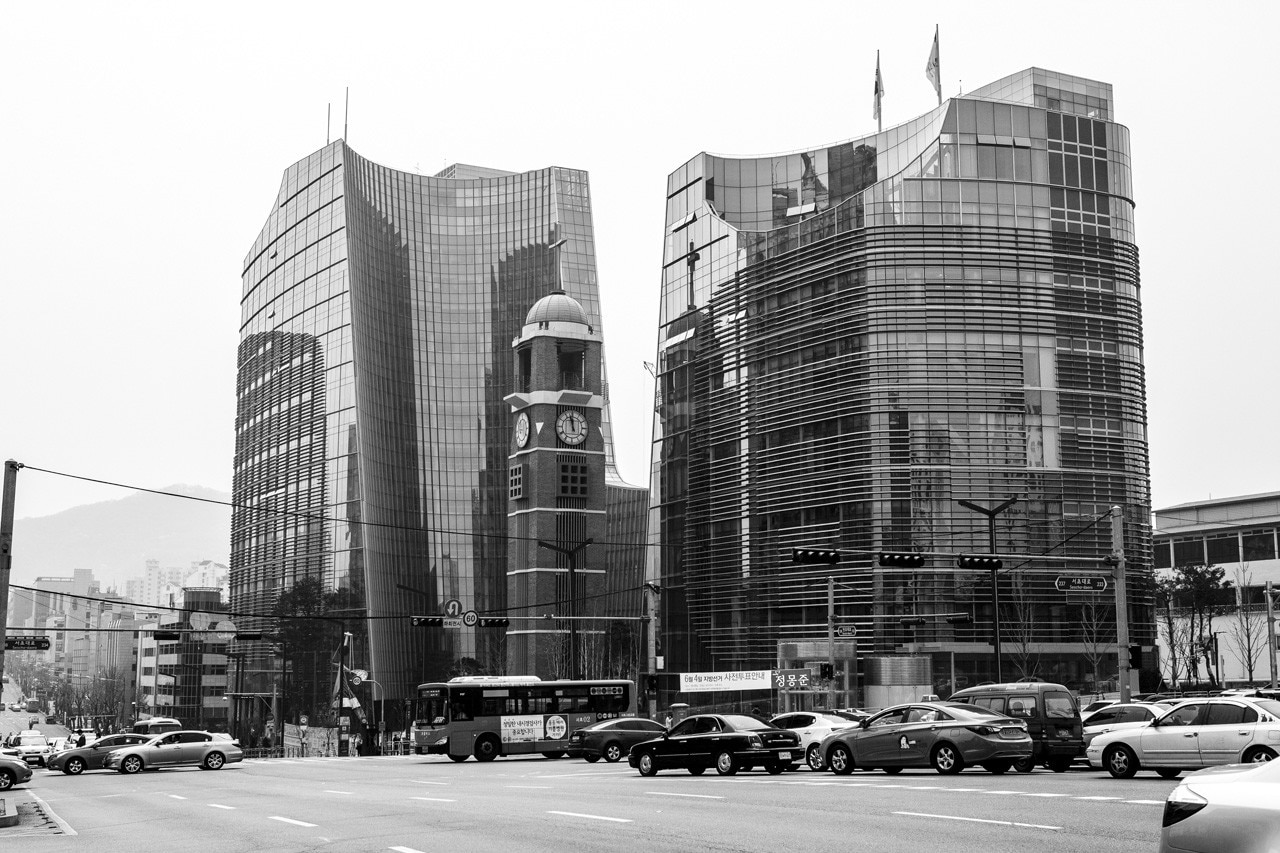There is no better example to demonstrate the validity of this conjecture than to dissect the Seoul Church. The typology of the church has remained (at least in western society) unquestioned for centuries, design follows strict canons that control both its layout and latent symbolism. The Seoul church subverts all these preconceptions to produce a notion of a genetically modified church that at first sight might remind us of past post-modern pastiche exercises but on closer inspection reveals a highly complex hybrid.
First you have the sheer numbers of churches, according to various search engines; Seoul has more than 48,000 churches, it is simply impossible to navigate the city without encountering a church. Then you have the scale, literally from micro to macro with every possible in between permutation.
All these characteristics still barely scratch the surface of the real complexities behind Seoul churches, which can only be understood through a direct example. The bell tower is the ubiquitous symbol of any self-respecting church; over the centuries it has acted as both as landmark and performed the key function of announcing the commencement of the proceedings.
In Seoul, like in most other contemporary metropolises, bells have long stopped ringing, leaving the tower to become a redundant symbolical gesture. However rather than accept this superfluous act the Seoul church reinvents the tower as a vertical car-park, an ingenious solution to stack cars and at the same time keep the traditional aspects alive.
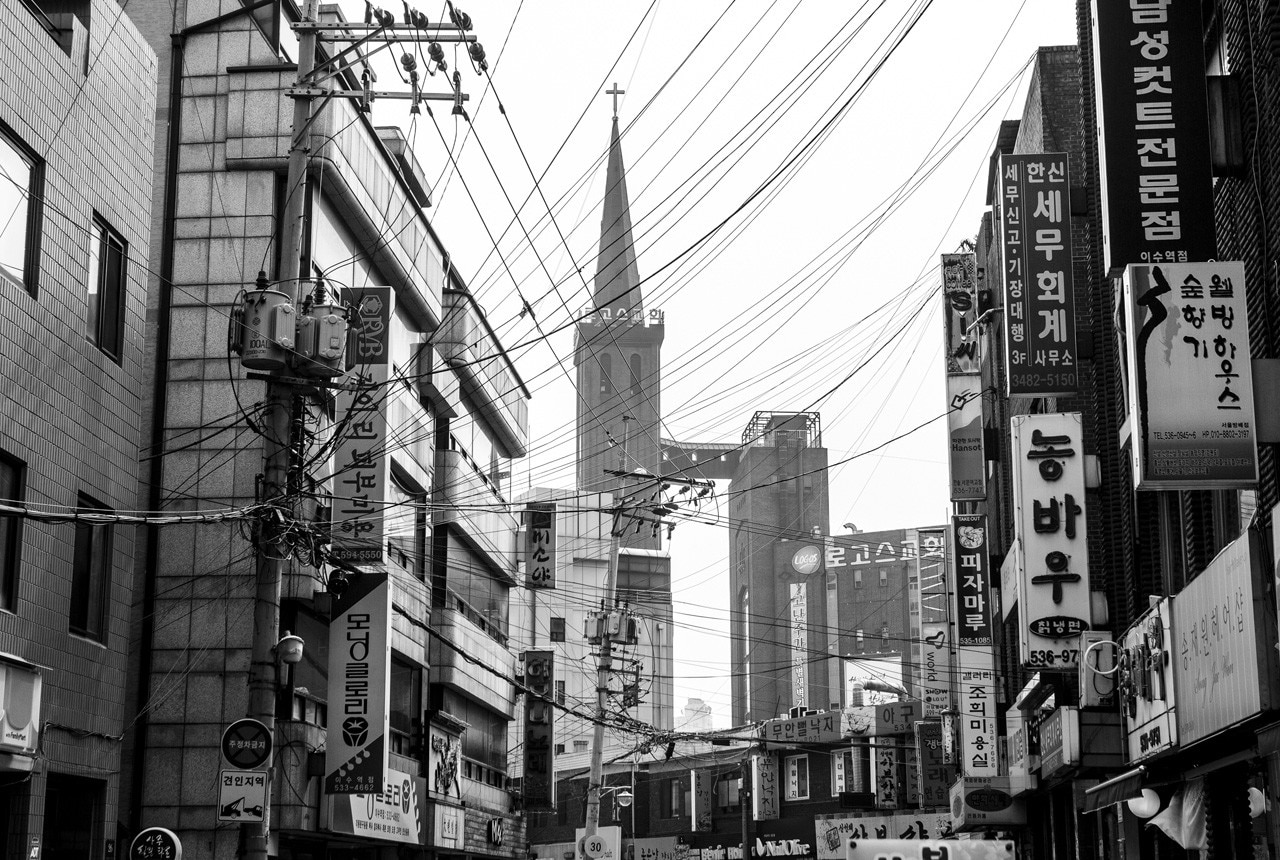
 View gallery
View gallery
Peter Winston Ferretto, is an Architect and Associate Professor of Architecture at CUHK in Hong Kong. Since 2009 he has been running his own studio PWFERRETTO based in Seoul, Hong Kong and London. His approach to architecture can be explained as an experiment in reawakening a sense of wonder in the present “normal” environment.

